Finding a dentist is set to locate someone you like and believe. The dental health facility you pick out ought to be your & your circle of relatives’s dental home, your headquarters for all things dental fitness-related. It has to be an area in which you experience snug & in which you’re greeted by way of call when you arrive. In addition, your dentist should be convenient & customized so that you recognize you’re getting first-rate care for your precise smile.
How Do I Find a Good Dentist Near Me?
One of the nice methods to find a new dentist is to invite your coworkers, buddy, & circle of relatives individuals. Chances are a maximum of your co-people stay near & a percentage of the identical dental insurance that you do. Ask your colleagues for a recommendation for a great dentist nearby.
Convenience is a massive issue in locating a dentist. Many humans search for dentists close to their homes, which simply makes them feel. But you may also keep an eye out for dental offices which can be near your place of job. Another clever idea is to keep an eye out for dental practices along your go back and forth.
How Can I Find a Dentist Who Makes Dental Care Easy For Me?
We apprehend that very few people eagerly sit up to go to the dentist, but everybody wishes to go to the dentist. For that reason, we accept as true that dental care ought to be healthy in your life as easily as feasible. Look for a dentist who has handy hours that don’t require you to overlook paintings or pull your children out of the faculty for teeth cleanings. A dentist has to make it smooth for you using providing appointments earlier than work & after paintings, & even on the weekends, so that you don’t have to take a day without work.
Your teeth cleansing appointments are the most essential part of your preventive dental care & maintaining your smile healthful. Therefore, cleansing appointments ought to be as smooth & brief as possible! Cleaning appointments have to be approximately an hour lengthy, including a while with the dental hygienist, x-rays by the dental assistant & a short exam & checkup with the dentist. If we handiest ask for 2 hours of a while every 12 months, what excuse do you honestly have now not to go to the dentist?!
How Can I Find a Dentist Who Provides Personalized Care?
Like any relationship, it’s critical to have excellent conversation. Your dentist’s workplace needs to continually answer the smartphone while you name. You should nearly in no way be put on maintenance or get the answering machine at the same time as the dental sanatorium is open.
Good conversation also means having a dentist who listens & takes the time to explain all techniques & hints. If you have questions about the remedy that your dentist recommends, consisting of why it’s important, don’t simply nod & pretend you apprehend. It’s vital will be an energetic participant in your care, so make certain to find a dentist who listens to your worries & can explain your dental care in non-technical phrases you can without difficulty.
How Can I Find an Affordable Dentist?
Many consider whether a dentist near me is low-cost to be a remember of opinion, especially due to the fact dental charges vary through region (frequently because of factors beyond the dentist’s manipulate, such as dental components & insurance agencies).
We consider that is ethically correct for dentists to make preventive care as cheap as possible. That’s due to the fact a bit of cash spent on preventive care can shop maximum sufferers lots of bucks in capacity restorative dentistry or periodontal care in the future. In reality, in most cases, patients who have dental coverage will no longer pay something out-of-pocket for preventive care consisting of enamel cleanings. Those insured sufferers who do pay for preventive care generally most effectively pay a completely small co-pay.
For patients who don’t have coverage, many dentists offer in-house dental coverage plans. These club plans are special to that dentist’s workplace & typically include preventive care together with cleanings & annual x-rays at no additional fee, plus reductions on other common strategies including crowns, fillings & from time to time gum disorder remedies.
Most dental clinics additionally offer some type of financing option, which includes CareCredit or Springstone. If you’re concerned about how a good deal your dental care might cost, make sure to ask your dentist about what monetary arrangements they offer. Most dentists could be bendy with sufferers about how they pay for his or her care. After all, our number one goal is for you & your circle of relatives to have wholesome smiles for your entire life!
